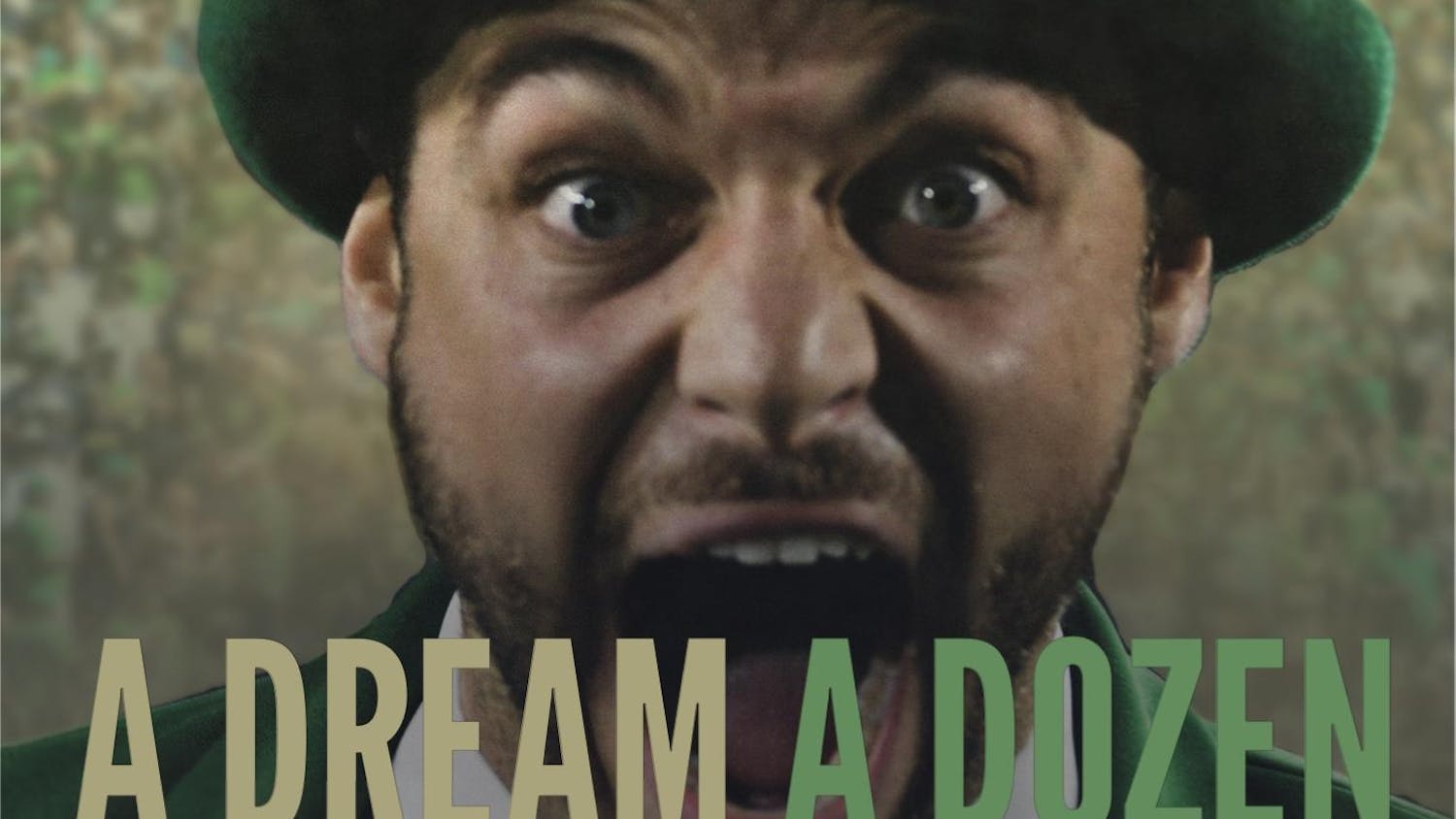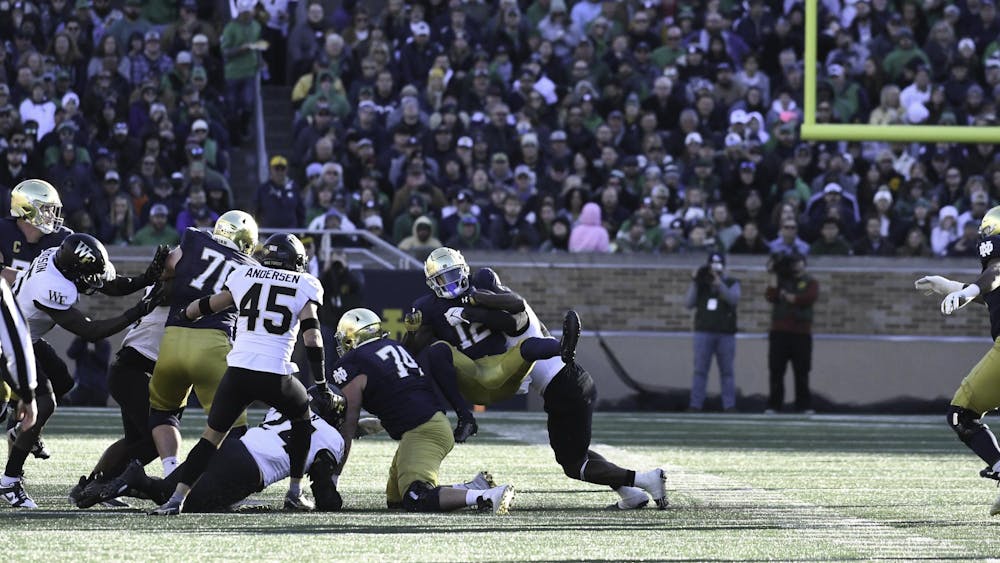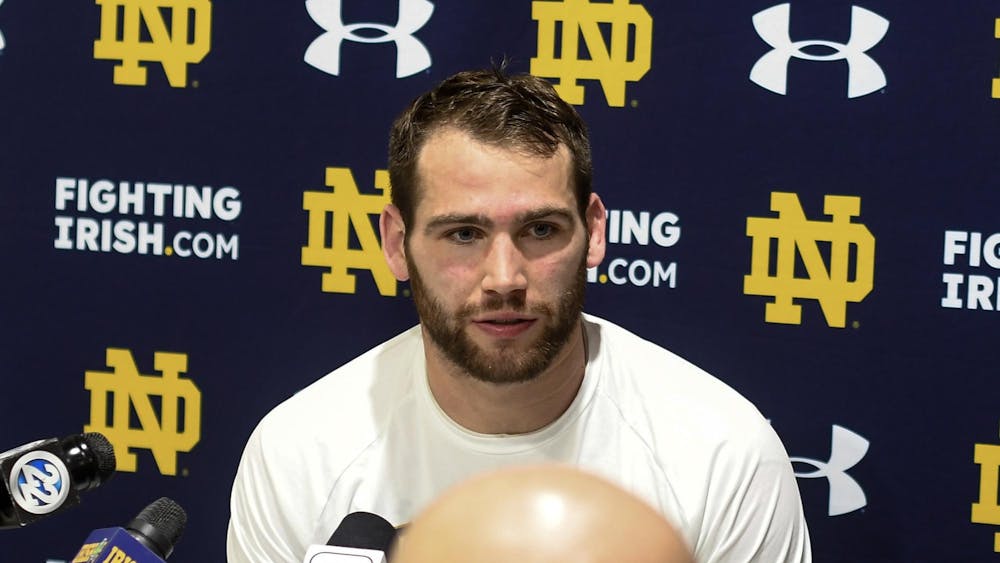Let’s start with some time travel.
Just over a month ago, before Notre Dame re-opened its contentious rivalry with Michigan, I told people to slow down. I had a feeling the Irish (6-0) would emerge, but I was still wary of what such a win over the Wolverines ((5-1, 3-0 Big 10) — keep winning, Jim Harbaugh!) would do for the Notre Dame faithful.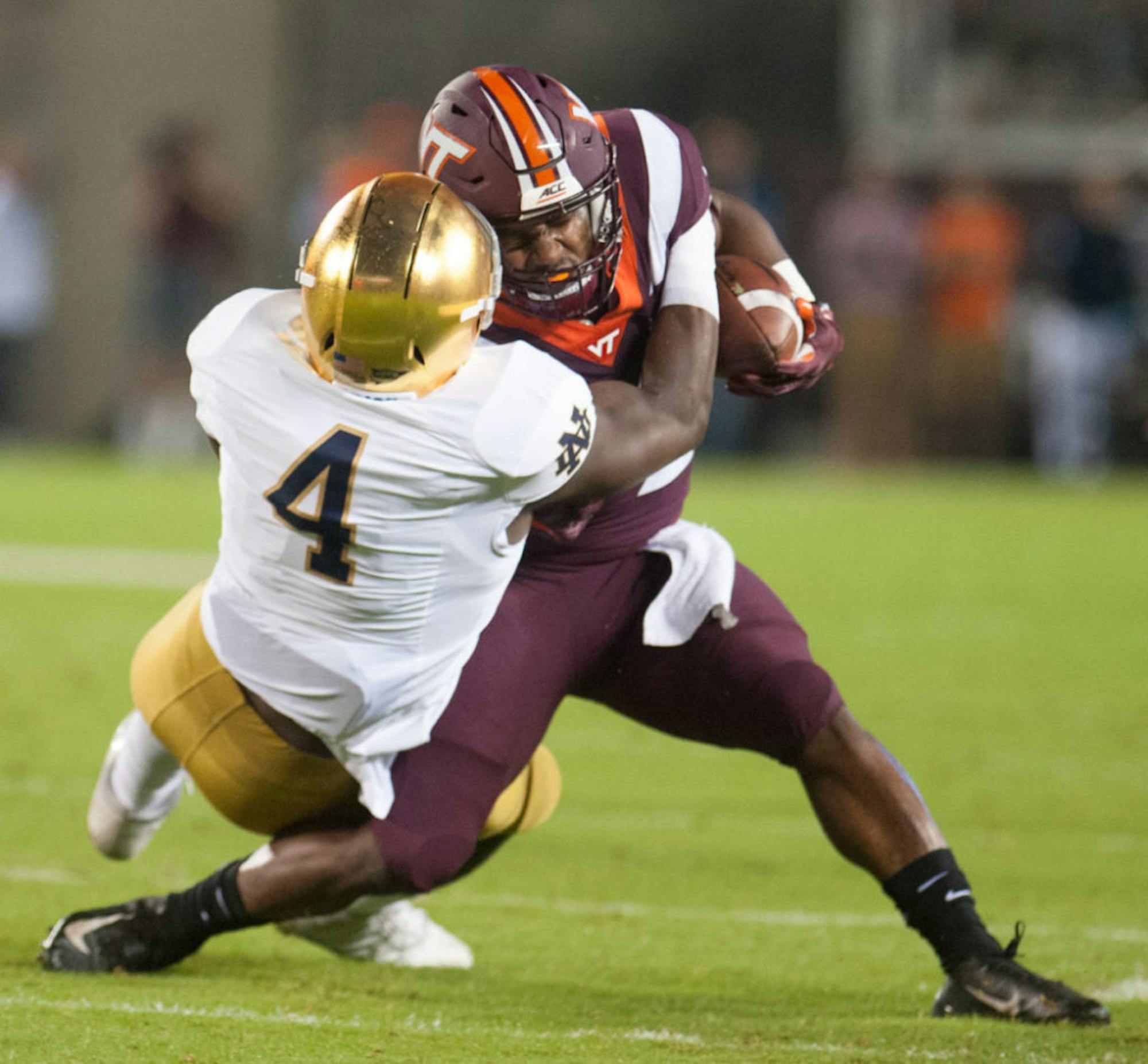
Because for all of the ecstasy, I couldn’t help but hear an ominous oracle whispering to me as Brian Kelly once again began his quest for the title. “Beware! Beware!” it croaked. “Beating the Wolverines early in the season doesn’t guarantee a national championship! Plus, it’s at home! You may want to believe it, but beware the consequences!”
Ok, maybe I’m being a little dramatic. But let’s do some more time travel — which will take us to not one, but two seasons in the last seven years.
We can begin in 2012.
Coming off back-to-back 8-5 seasons under Kelly, there was a sense that the Irish could finally make some noise in 2012. The defense had grown under coordinator Bob Diaco, and the offense had an exciting young quarterback named Everett Golson. After opening 3-0, including a dominant 20-3 victory over No. 10 Michigan State on the road, Notre Dame returned home to face No. 18 Michigan. The Wolverines, led by Hesiman hopeful Denard Robinson, had beaten the Irish three seasons in a row.
What ensued was Notre Dame’s coming-of-age party as a team to be reckoned with. The Irish defense chewed up and spit out Robinson — who had 948 yards of total offense in his previous two games against Notre Dame — and forced six turnovers in the win.
The win over the Wolverines sparked an incredible run. Despite a loaded schedule, the Irish held their own, at home and on the road. Now, the offense wasn’t the greatest, but with a defense as good as Diaco’s, it didn’t need to be. The Irish finished the regular season with an elite unit: leading the country in scoring defense and red zone touchdown percentage. In fact, they nearly forced as many turnovers (five) as touchdowns given up (eight) inside their own-20-yard line — just ask Stanford how its goal-line offense turned out.
So when Jan. 7 rolled around, Notre Dame was No. 1 in the country and playing defending national champion Alabama for the title. But there were a lot of Irish fans that scoffed when Vegas made the Crimson Tide 10-point favorites. “No way!” they said. “Have you seen our defense?! Have you seen Manti Te’o play!? This team is destined!”
And then those very same fans watched Brian Kelly’s team get smacked 42-14 in a game that was over at halftime.
Because the reality was, the Irish were not destined. They didn’t have an offense capable of hanging with Alabama, and the Tide knew it. From the first snap, Alabama head coach Nick Saban punished Notre Dame at the line of scrimmage, and the Irish defense, as good as it was, couldn’t get off the field and quickly tired.
The final stat line?
Notre Dame: 32 yards on 19 carries.
Alabama: 265 yards on 45 carries.
Ok, I won’t rub it in. Yeah, it sucked. Notre Dame had an incredible season, and in many ways that wasn’t a fair way to end it. But, that’s not to overlook the striking disparity between Notre Dame’s offense and Notre Dame’s defense — and the Tide exploited it.
The real issue is that Notre Dame fans let their expectations cloud their reason. Not convinced? Let’s compare the national championship game to one earlier in that season, against Michigan.
The Irish finished with 94 yards on 31 carries; the Wolverines managed 161 yards on 41 carries.
In Week 4, there were clear signs that the Irish offense was going to struggle against good teams. Notre Dame forced six turnovers against Brady Hoke’s team. Six. And only managed 13 points.
This team was defense-first from the beginning, and when the wins started piling up, the Irish faithful let their hunger for a national championship idolize a good, not great offense as one that could take on Saban’s Evil Empire.
Stats matter. A lot more than wins against Michigan.
Not convinced? Let’s move on.
When you beat perhaps your biggest rival 31-0, it’s always going to get people excited. And that’s what happened in 2014. This was a new-look Notre Dame. Turf on the field, sleek Under Armour uniforms on the players and a crazy-smart new defensive coordinator named Brian VanGorder, who brought a fancy NFL scheme to build Notre Dame’s young and athletic defense into a powerhouse. Once again, the Irish had something to prove, and once again, the Wolverines came into Notre Dame Stadium early in the season. 31 points and a shutout later, the benchmark was set.
Was it fair? Well, for the following 240 minutes of football, it looked the part. The Irish defense was keeping teams under 20 points (besides a blip against North Carolina) and Everett Golson was back and balling. The hype was building and building as the Irish went into Tallahassee, Florida, to face the defending national champions, No. 2 Florida State. This was it. Alabama was a fluke. The Irish weren’t a program of the past, they were here to hang with the big boys of college football.
For 59 minutes and 47 seconds, it looked legit. In fact, it looked better than legit when Golson capped off an incredible final-minute drive with a fourth-and-goal sling to Corey Robinson for the game-winning touchdown. That was all until the Irish were called for offensive pass interference, the touchdown was discounted, the offense couldn’t replicate the score and the Seminoles won the game.
What followed was an epic collapse. Notre Dame lost five of its final six regular-season games after starting 6-0, and went winless on the road. For a team with such high expectations, few, if any, saw this coming. Especially after Michigan.
But again, take a step back. Look at the details. Notre Dame was young defensively. The defense was undergoing a complete overhaul. The quarterback was back after being suspended an entire year. There was a lot in flux. And, perhaps even more importantly, look at the teams the Irish played, starting with Michigan, up until Florida State.
Sure, it may have been a good win at the time, but the Wolverines finished 5-7 that season. Purdue? 3-9. Same with Syracuse. Stanford, the one ranked team Notre Dame played in the build-up to the Seminoles (and barely beat, for that matter) finished 8-5.
Not exactly playoff contenders.
So yes, it was disappointing to see the Irish fall so far from grace. But again, if you look closer, it’s not all that surprising.
If you’ve gotten this far, you’re probably interested in why this matters for 2018. Or probably annoyed at my pessimism — hey, at least I’m not Connor Mulvena.
The fulcrum of my column before Michigan was that the Irish needed more than a win over the Wolverines; they needed to beat a ranked road team before the playoff became even a remote possibility. Why? Well, since, 2014, the Irish had beaten exactly one ranked team on the road: Temple. Thus, this year I pointed to Virginia Tech as the benchmark.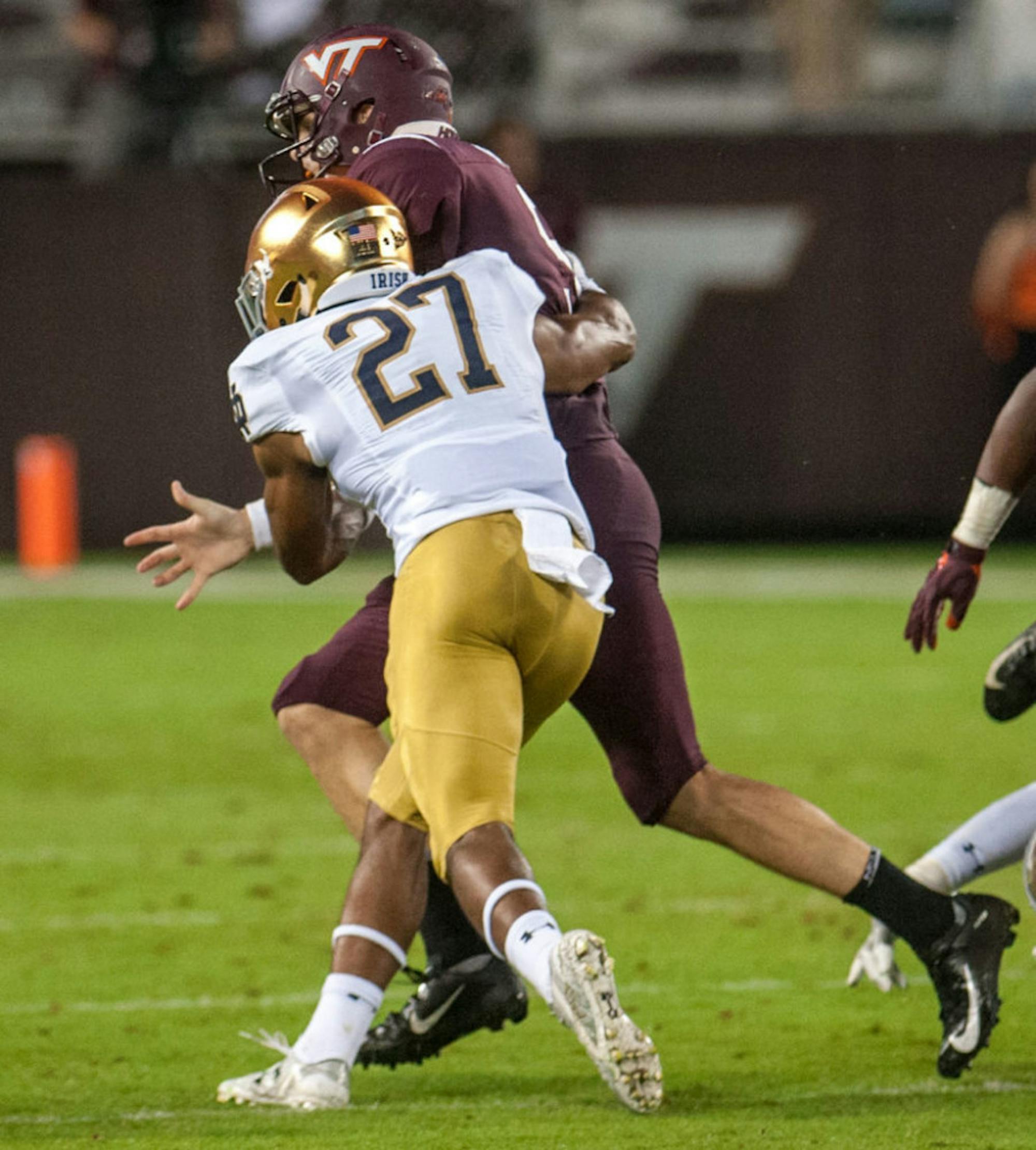
Now, I’ll admit, I was drinking the Tech Kool-Aid at the time, and probably unfairly — just ask Old Dominion, or the stat that the Hokies haven’t beaten a ranked team at home since 2009.
But that’s not to say that the Irish didn’t look impressive last weekend in a 45-23 win. Lane Stadium is still a tough place to play, and the Hokies gave the Irish all they could handle.
Notre Dame stood tall, handled the adversity and marched on. It did so by controlling the line of scrimmage, on both sides of the ball, and it moved in for the kill in the second half, as the Alabamas and the Ohio States of college football do on a regular basis.
What I saw in Blacksburg, Virginia, was a team that has emerged from the shadows of past expectations — and past shortcomings — to forge something new.
Defensively, Clark Lea’s squad is as good, if not more complete than 2012’s unit. It has everything you want in an elite unit: athleticism, depth and experience. And the offense, with junior Ian Book under center, suddenly looks like a juggernaut. Gone are the struggles against Ball State. Look at what the junior did first to Stanford, and then to Virginia Tech on the road. Notre Dame may be only 30th in offensive efficiency, but with Book over the last three games, Chip Long’s offense has hit a whole new level.
Perhaps most importantly, however, is this team’s balance. The Irish aren’t tipped in heavy favor of defensive prowess, like in 2012, or towards offensive output, like in 2014. This year, they have the ability and the consistency, on both sides of the ball, to win tough games. And that’s a scary thought.
So, it may have taken me 1,500 words, but I’m here to say it.
Cut the hype after a home win over Michigan.
Cut the expectations after a 6-0 start.
Even cut the history.
What do you have left? The Irish are the real deal.



